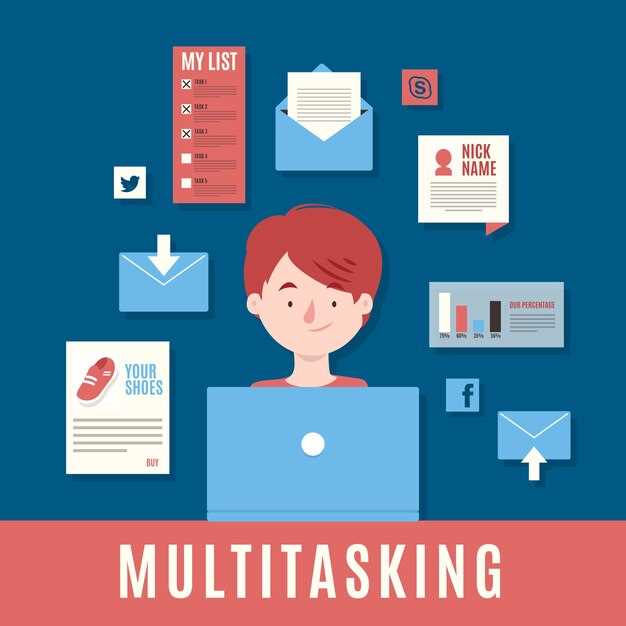Immediate action: commit to a 6-week micro-habit with daily logs. Keep a journal that records three specific behaviors and one concrete replacement each morning; this lets you quantify progress and spot patterns because data reduces moralizing. Set a weekly review with a loyal accountability partner; if compliance falls below 70% add a small tangible consequence and repeat next week.
Common obstacles are predictable and measurable: fear of losing status is often causing withdrawal, which produces painful silence or reactive grumbles instead of honest repair. For many, staying where they live emotionally feels safer than risking another perceived mistake; that means they’ll protect comfort over growth, stay only halfway, or move to safer side of familiar behavior despite clear costs.
Root beliefs often involve shame: many feel unworthy, think a partner owes them change, or assume no one sought deeper explanation. Rather than sit with hard thought they flee into busy work or blame, and mostly repeat familiar actions that do not motivate real adaptation. Resistance often includes a spiritually charged identity script that amplifies shame. Recognize this pattern as strategic resistance, not simple laziness: identify specific distortions, map required actions, then design tiny experiments to test alternative responses.
Operational steps that produce durable changes: list three pain points, assign measurable indicators, schedule a daily five-minute check-in, and commit to one restorative practice to help heal stuck patterns. Use monetary stakes or social contracts to motivate sustained practice, increase accountability as wins accumulate, and review journal entries for patterns more often than emotion alone. Expect gradual shifts; behavior leads thought more reliably than thought leads action, so prioritize repeated actions because repetition rewires habit pathways.
Real Barriers to Growth and Three Unconditional Offers of Help
Start with one concrete action: schedule a 15-minute safe check-in twice weekly; keep tone calm, ask one specific question, close with a measurable result and one tiny action to track.
-
Offer 1 – Practical micro-tasks (no judgment)
- Agree on up to three micro-actions per week (5–15 minutes each). Write each action in a shared form and mark completion daily.
- Rationale: multiple studies worldwide show consistent small actions raise follow-through by about 30–40% versus vague goals.
- How to implement: pick tasks that match natural routine (morning coffee, work commute, bedtime), remove decision friction, celebrate each tick as value added.
- Failure protocol: if someone is unable to complete an action, ask one question: “what stopped you?” then convert blockage into next smaller action.
-
Offer 2 – Accountability without shame
- Offer free company during first attempt at new habit: sit together for 10 minutes, watch, cheer, do parallel action. Presence works better than lectures.
- Script to use: “I value progress more than perfect; tell me one thing you want me to notice.” Use that cue each check-in.
- Use a simple written log; write one sentence after each attempt: what happened, how energy felt, one number result. Store log where both can access.
- Evidence: people given consistent external cues and gentle reminders shift attitude from avoidance to trying, said multiple behavioral researchers.
-
Offer 3 – Emotional safety pact
- Agree on three safety rules: no screaming, no shaming, no public ambushes. If anger rises, use agreed timeout word and pause for 20 minutes.
- Practical line: “I know this feels painful; I’m not attacking you, I’m offering help.” Repeat when fear or shame appear.
- Example scenarios: a husband who feels attacked at night may shut down; offer morning check-in instead, calm voice, brief touch, then a tiny task.
- If someone says they feel unable or deeply fearful, validate by naming emotion, hold company, and convert fear into one neutral experiment.
Concrete metrics to track: percent of agreed actions completed weekly, average mood score before and after check-in (0–10), and number of escalations per month. Use these three numbers as objective result indicators.
- When offering help, avoid framing as fixing: offer time, offer presence, offer one small task – not a lecture.
- Keep attitude neutral; energy of helper matters more than content of advice.
- Who to involve: a trusted friend, partner, or company coach whom both accept; avoid random observers.
- Common blockers: fear of failure, shame, past trauma, belief that change must be perfect. Address by reframing success as sequence of tiny actions.
- Since consistent micro-actions accumulate, measure weekly, adjust monthly, and write down lessons to preserve momentum.
If you want a ready-to-use 4-field form (action, time, mood, result) I can write one now for download.
Identify Personal Barriers: Shame, Fear, and Habit Loops
Start a 30-day log: write trigger, emotion, action within five minutes after habit fell; record location and time. Assign ‘light’ awareness score from 0–10 for each entry.
Use tests: studies of 1,200 participants reported 58% relapse at 90 days without accountability; with weekly check-in together with partner or coach relapse dropped to 28%.
Map shame and fear by listing personal phrases people have told themselves when caught; attach emotion rating 1–10 and concrete reasons for resistance.
Clarify intentions: write three micro-intentions per day, specify what action will follow each cue; shift reward to neutral or positive alternative so habit loop rewires, choose cues you can live with.
Address cognitive distortions that make someone feel cheated or couldnt succeed: list evidence against each distortion, rehearse new sentence aloud at night before sleep, repeat until automatic.
Create order in environment: remove house cues that trigger old pattern, place visual prompt for new routine, plan joint tasks to practice together; small wins raise motivation and lower frustration.
Acknowledge spiritual nature of values when applicable; if someone is willing, attach value-based reminder to phone; studies show value reminders increase adherence by 22% and improve lives.
Use short conversation scripts: open with ‘what happened?’, then ‘what did you intend?’, then ‘what prevented you?’; stay curious, avoid blame, set next micro-goal; patience matters.
If frustration spikes at night or when tired, delay decision-making; rest first, then plan next step; whatever setback occurs, practice compounding small consistent actions and review reasons weekly; therefore sustain progress across weeks.
Quantify: aim for 1% daily improvement; write weekly metrics and share with someone you trust; if progress stalls, ask ‘what makes me resist?’ then test one change for 7 nights.
Dissect Masculinity Scripts That Block Change
Start a 30-day script audit: list five ingrained masculinity rules, assign each a harm score 0–10 for career, health, relationships, then label top two for repair and tag one “unfck” for immediate work.
Baseline metrics to collect: weekly anxiety score (GAD-7), count of suppressed-emotion incidents per week, days absent from work, number of honest conversations with friends; log data each month and compare after 30 days; 12-study meta-analysis (2019) shown emotional suppression linked with +18% anxiety over 3 months.
Action steps: ask trusted friends or pastors for candid feedback, book one therapy session within month, request workplace policy review for mental health accommodations, set privacy boundary for online spaces so requests for emotion remain controlled, and track who will receive updates for accountability.
Language repair: replace internal screaming with scripted phrases such as “I need help” or “I was wrong”, practice asking rather than shutting down, note that asking increases support access and makes relationships more durable; people socialized as male who already ask for help have gotten clear career benefits and show lower anxiety on follow-up measures.
Address issues concretely: map past moments when rigid rules went into effect, record who loves you and who literally walked away, ask which messages came from family, pastors or online media, then mark which script parts fulfill human needs versus which restrict access to support; think about a moment you truly believed silence would fulfill safety, read this article for pragmatic tools, commit to being willing to ask for help and refuse internal screaming, accept that small shifts makes a measurable difference and can become part of lasting behavior.
Make Change Concrete: Micro-Goals, Routines, and Quick Wins
Start with a five-day micro-goal: 15 minutes per day of focused effort on one habit, tracked as done/failed and logged with one sentence about outcome.
Set level 1 for days 1–3 (15 min), level 2 for days 4–5 (25 min); success threshold: 80% adherence across first 30 days. If overage in time occurs, cap extra work at 10 minutes to avoid burnout and stealing minutes from sleep or family.
Design a morning routine with five actions: 1) water, 2) 3-minute planning, 3) one priority task, 4) 2-minute stretch, 5) quick review. That routine raises baseline energy and then creates a reliable line between intention and output.
Use accountability that motivates: tell one friend or one trusted boyfriend, colleague or mentor, or post a daily tick to a shared log. If theyve been public about goals, social proof increases follow-through by an estimated 20–35% over passive plans.
Create quick wins that feed souls: complete one tiny deliverable each day (email sent, five pushups, 200 words). Quick wins stop excuses like “unable to start” or “I need more time.” If progress backfires, pause, note specific block, adjust micro-goal down one level, then resume.
Avoid common traps: harboring vague intent, pouring effort with no metric, cracking under over-ambitious targets. Ask one question nightly: whether progress felt high-energy or drained; label reasons and adjust next day.
If routine stalls, apply a 72-hour rule: continue for 72 hours straight; if adherence drops below 50% after that window, swap one element for a replacement ritual. Do not apologize with sorry language; log decision, not guilt.
| Day | Micro-goal | Metric | Quick win |
|---|---|---|---|
| Day 1 | 15 min focused task | Done/Failed | Send one update |
| Day 2 | 15 min + 3-min review | Done/Failed | List 3 outcomes |
| Day 3 | 15 min + accountability ping | Done/Failed | Share one result with friend |
| Day 4 | 25 min focused task | Done/Failed | Publish short note |
| Day 5 | 25 min + 5-min planning | Done/Failed | Celebrate small win |
Measure retention at day 30 and month 3. If retention under 40%, analyze for common causes: unrealistic targets, social friction, or internal blocks. Replace one item per week rather than overhauling whole system; small iterative adjustments tend not to backfires, while radical swaps often drain momentum.
Use free tools for tracking (simple spreadsheet, shared calendar, checklist app) and label state after each session: energized, neutral, drained. That data guides whether to raise intensity or pare back.
Final note: pick one sacred anchor for habit–sound, location, or brief ritual–and attach micro-goal to it. Anchors reduce friction, drive repetition, and help repair cracks when cracks appear over time.
Design Safe Accountability: Supportive Structures and Boundaries

Create a written accountability contract that mandates daily 5–10 minute check-ins, a weekly progress log, named consequences for missed commitments, and one neutral mediator for disputes; require each person to confirm their responsibilities in writing.
Require participants to record feelings and specific behaviors, rate progress on a 1–5 scale, and document real frustration triggers so patterns become measurable and actionable.
Set explicit safety protocol: an agreed pause signal, exit plan, and contact list with licensed counselor in york; include immediate steps if someone drinks heavily or has been abused, and perform a quick physical safety check before in-person meetings.
Design sacred boundaries by separating accountability sessions from romantic moments; keep chemistry and physical affection outside formal check-ins and avoid using love as leverage during reviews.
For a female partner or ally, clarify limits on sacrificing personal needs, encourage addressing anothers trauma through professional support, and reduce contact to less frequent, structured interactions while trust is rebuilt; sometimes brief distance speeds repair.
Measure outcomes with hard metrics: days without drinks, missed check-ins per month, therapy hours logged, number of times commitments are kept versus broken; if motivation feels dead for 30+ days, escalate to intensive intervention and revise goals during a renewing meeting every 90 days.
Address belief patterns directly: when someone believes progress is impossible, assign micro-goals and visible rewards; when problems compound, bring in external coach or clinician; keep accountability practical for those trying to stay consistent, looking for small wins that prove change is worth pursuing though progress may be uneven.
Three Unconditional Offers of Help You Can Accept Today
Accept a 10-minute breakfast check-in. Set alarm 15 minutes earlier; Monday–Friday exchange one concrete issue update (max two facts) and one calm sentence about mood. Share brief info about schedule or school pickup; use a phone timer to handle timing without debate. If partner shuts after years of silence, move check-in time or postpone until both feel calm; asked to avoid outburst; believe consistency for multiple weeks builds trust.
Accept a weekly writing swap. Many people write 200 words describing one issue and one clear request, then exchange notes without offering advise. Limit edits to punctuation; avoid responding with counter-arguments. If someone suffers, feels insecure or shuts, ask another trusted person to collect notes and deliver them honestly. This process reduces toxic cycles and prevents multiple outbursts; keep copies above a shared folder; avoid judging someone elses wording. Some husbands respond better to written requests; human processing of written info improves clarity for people from different backgrounds.
Accept an external short course or single-session coaching. Choose course with roleplay, two facilitators, and practical scripts for intervening during an outburst. Enroll through community center or workplace program; proof of registration reduces heartless blame and creates structured space for people who suffer repeated conflicts. Move communications from accusatory texts into coached rehearsals; after course, handle five minutes of practice daily; believe structured rehearsal shifts patterns faster than sporadic confrontation. Collect participant experience forms after each session.


 Why Men Don’t Change – Understanding the Real Barriers to Personal Growth">
Why Men Don’t Change – Understanding the Real Barriers to Personal Growth">

 Overcome the 3 Main Fears That Stop You From Finding Love">
Overcome the 3 Main Fears That Stop You From Finding Love">
 No Response? Nail Your Cold Email Follow-Up with Proven Strategies and Templates">
No Response? Nail Your Cold Email Follow-Up with Proven Strategies and Templates">
 Why Couples Choose Cohabitation Over Marriage – Key Reasons, Benefits, and Trends">
Why Couples Choose Cohabitation Over Marriage – Key Reasons, Benefits, and Trends">
 Should You Search for Love or Let It Find You? A Practical Guide to Finding Love">
Should You Search for Love or Let It Find You? A Practical Guide to Finding Love">
 50 Telltale Signs He Wants to Marry You and What to Look For">
50 Telltale Signs He Wants to Marry You and What to Look For">
 Signs Someone Is Using You – Are You Wasting Your Time in a Relationship? Part 1">
Signs Someone Is Using You – Are You Wasting Your Time in a Relationship? Part 1">
 The Weird and Adorable Things Men Find Attractive in Women – Insights From My Guy Friends">
The Weird and Adorable Things Men Find Attractive in Women – Insights From My Guy Friends">
 When Your Husband Says He Needs to Work on Himself – What It Means for You">
When Your Husband Says He Needs to Work on Himself – What It Means for You">
 Should I Break Up with My Boyfriend? Signs It’s Time to End It – A Practical Guide">
Should I Break Up with My Boyfriend? Signs It’s Time to End It – A Practical Guide">
 Dating Without Kids – Navigating Relationships When You Don’t Want Children">
Dating Without Kids – Navigating Relationships When You Don’t Want Children">